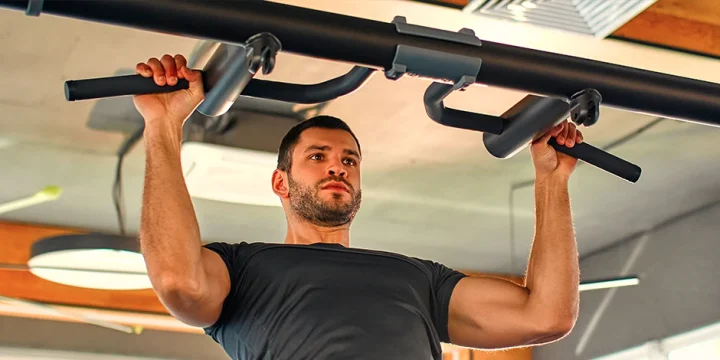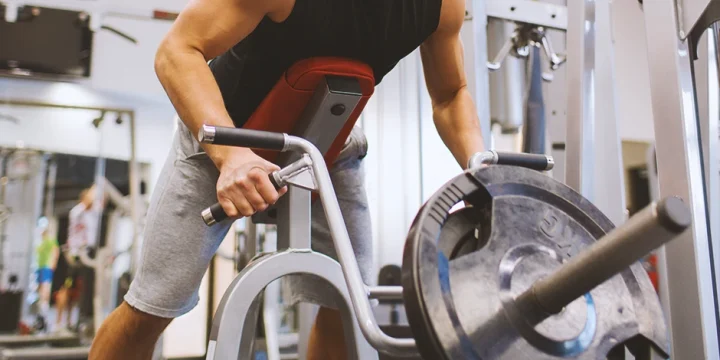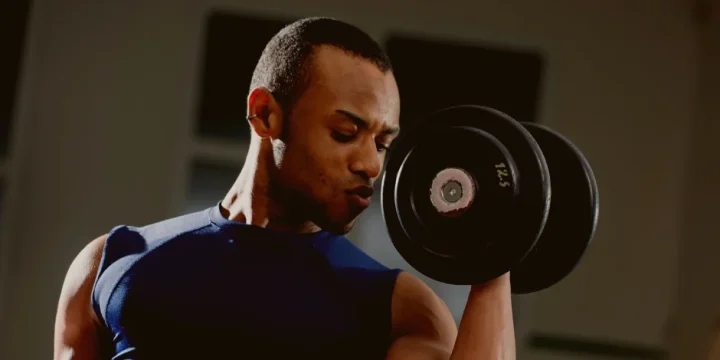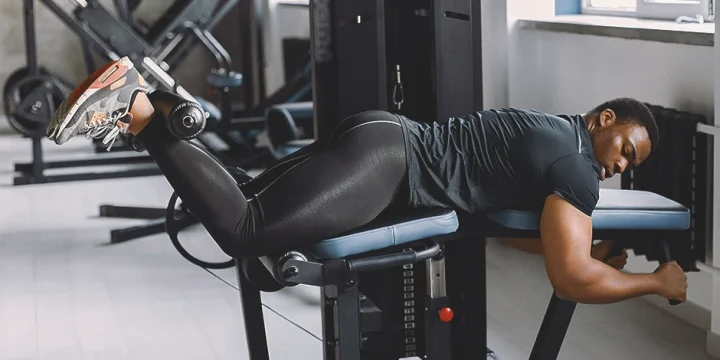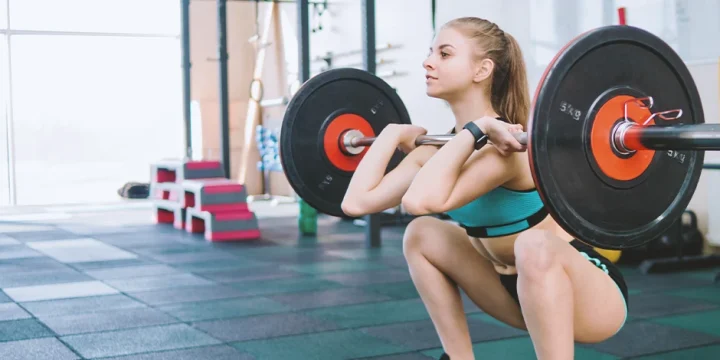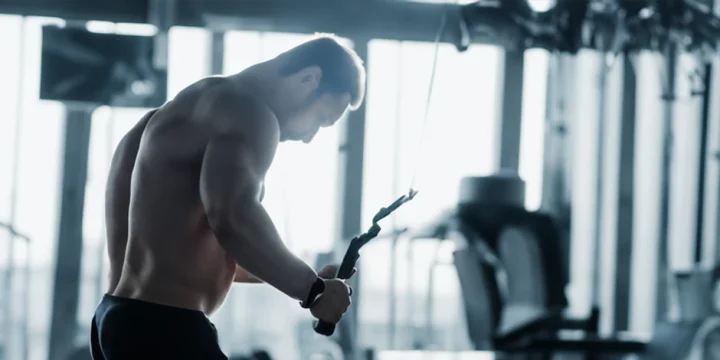A hamstring strain injury is one of the worst injuries an athlete or even a regular gym goer can experience.
More coaches have started implementing the Nordic ham curl leg exercise for rehabilitation purposes.
Based on my experience as a certified personal trainer and 35 hours of extensive research, I collected the most important information regarding the Nordic inverse leg curl exercise.
After reading the article, you will know what a Nordic hamstring curl is, its benefits, muscles worked, and how to perform them correctly with perfect form.
Quick Summary
- To perform the Nordic hamstring curl, kneel and secure your feet, lower your body towards the floor using hamstring control, then return to the starting position using your arms.
- Nordic hamstring curl effectively builds knee flexion strength and targets muscles like the biceps femoris, semitendinosus, and semimembranosus.
- According to the National Institute of Health, Nordic hamstring curls can significantly decrease the risk of hamstring strains and knee-related injuries.
- In my view, the Nordic hamstring curl, with its emphasis on both prevention and strength building, is an essential exercise for athletes and regular gym-goers alike for maintaining lower body health.
How to Do It?

Here is how to do the Nordic hamstring curl:
- Ask a partner to hold your legs during the hamstring curl exercise for a couple of reps.
- Kneel down and ask your partner to put pressure on your calves so you can lower your upper body without your legs lifting.
- Cross your arms on the chest, making an “X,” and ensure your hips are neutral and don’t create a substantial angle between the upper and lower body. They should be as straight as possible.
- Start the exercise by lowering your body towards the floor by only performing the knee flexion while your partner holds your legs.
- When you feel like you can’t hold anymore, drop your body on the floor but amortize it with your hands to avoid injuries.
- Get back up in the starting position and repeat.
- Repeat for 6 reps, 3 sets, and rest for 2-3 minutes between the sets.
Mistakes to Avoid
When performing Nordic hamstring curls, it's important to avoid these common mistakes to ensure effectiveness and prevent injury:
- Improper body alignment: Avoid arching your back or hunching over. Maintain a straight line from your head to your knees throughout the exercise.
- Rushing the movement: Don't rush through the curls. Perform them in a controlled manner to maximize muscle engagement and reduce the risk of injury.
- Neglecting core engagement: Failing to engage your core can lead to improper form and reduced effectiveness. Keep your core tight to support your body during the exercise.
- Overextending at the bottom: Avoid going too low or collapsing quickly at the bottom of the movement. This can strain your hamstrings. Lower yourself as far as you can control, then use your arms to assist in returning to the starting position.
What Is a Nordic Hamstring Curl?
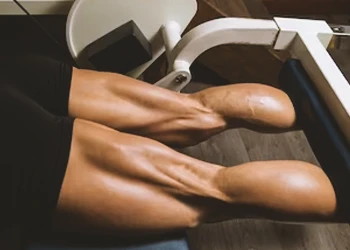
It is a preventive and strengthening lower body posterior chain exercise targeting hamstring muscles such as the biceps femoris, semitendinosus, and semimembranosus.
I've found the Nordic hamstring exercise to be highly effective in rehabilitating hamstring strain injuries, benefiting both athletes and everyday clients.
Additionally, the Nordic hamstring curl, an advanced lower-body exercise, demands significant strength and is a key part of my training programs.
The Nordic hamstring curl is also a great leg curl alternative.
Assisted Nordic Hamstring Curls – Exercise Regression
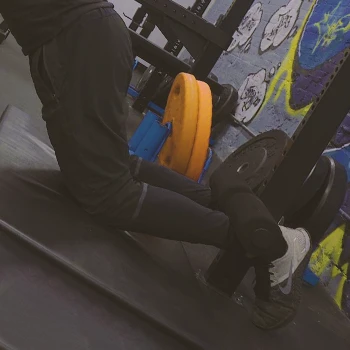
I've found that the assisted Nordic hamstring curl, a regressive variation of the original exercise, effectively builds initial strength in my clients before they progress to more advanced versions.
It is performed with the help of a quality resistance band, which will create tension as you go down toward the floor.
The band tension will create sufficient force in the opposite direction so you can continue to lower your body without dropping due to limited posterior chain strength.
Wrap the resistance band around your body and on the rack or some solid object behind you to perform assisted Nordic hamstring curls.
4 Benefits of This Exercise

Below are the most important Nordic hamstring curl benefits.
"The Nordic ham curl is currently enjoying a bout of phase-two popularity that’s been spurred by a slew of studies that have shown they’re great for hamstring hypertrophy, increase eccentric strength, and vastly decrease the odds of getting a hamstring injury."
- Nick English, Certified Personal Trainer
Build Stronger Hamstring Muscles
The Nordic hamstring will strengthen your lower-body posterior chain muscles. These muscles include the biceps femoris, semitendinosus, and semimembranosus.
Strong posterior chain lower-body muscles prevent hamstring strains and similar lower-body injuries.
Building stronger hamstring muscles will reduce the chance of injury, improve your running speed, and build a more stable and functional lower body.
Can Decrease Your Risk of Injury
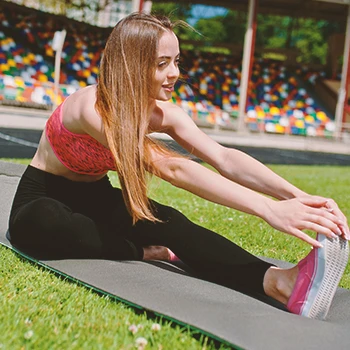
According to the National Institute of Health (NIH), Nordic hamstring curls can decrease the risk of injury associated with hamstring strains and knee-related issues [1].
You should incorporate one session per week of exercising your hamstring muscles with Nordic hamstring curls.
This will strengthen your posterior chain and lower the potential of future strains.
Nordic hamstring curls are demanding, so sticking with three sets of six reps is advisable for beginners, less experienced athletes, and gym goers.
Can Improve Performance During Other Exercises
According to the NIH, the Nordic hamstring curl correlates well with performance carryover to other biomechanically similar lower body exercises [2].
For example, having strong hamstrings from Nordic hamstring exercises will drastically improve your control during single-leg Romanian deadlifts and good mornings.
Also, you can efficiently perform the hamstring sliders exercise, which is a derivative of the Nordic hamstring curl done with sliders on the floor.
Versatile
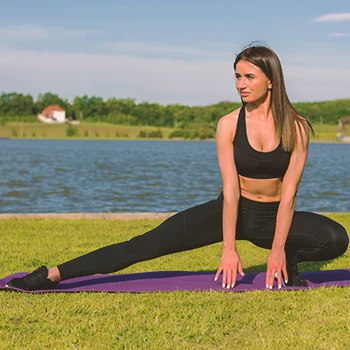
As a personal trainer, I've found that incorporating Nordic hamstring curls into my clients' routines adds versatility to their lower body training and helps avoid monotony, a key demotivator.
I also recommend variations like unilateral and bilateral hamstring sliders, particularly beneficial for athletes focused on running and jumping.
Workout versatility is crucial for maintaining stable and unchanged training intensity.
It will help you, in the long run, to develop stronger and more functional hamstring muscles and the posterior chain as a whole.
Nordic Hamstring Curls Variations
Here are four variations of Nordic Hamstring Curls, each offering a different level of challenge or targeting the muscles slightly differently:
- Standard Nordic hamstring curl: This is the classic version where you kneel and lower your body towards the ground, using your hamstrings to control the descent and assist in returning to the starting position.
- Eccentric-only Nordic hamstring curl: In this variation, you focus only on the lowering (eccentric) phase. You drop down slowly, then use your hands to push yourself back up to the starting position, emphasizing the eccentric muscle contraction.
- Single-leg Nordic hamstring curl: This advanced variation involves performing the exercise on one leg at a time. It significantly increases the load on the working leg, making it more challenging and beneficial for unilateral strength development.
- Nordic hamstring curl with band assistance: Using a resistance band for assistance allows for a more controlled descent and easier return to the starting position. This variation is excellent for beginners or those who find the standard version too challenging.
FAQs
Are Nordics Good for Hamstrings?
Yes, the Nordics are good for the hamstrings. To prevent hamstring injuries, nordic hamstring exercises will fixate the portion below your knee joint, so you can strengthen the biceps femoris, semitendinosus, and semimembranosus muscles.
Do Nordics Lengthen Hamstrings?
Nordics don’t lengthen your hamstrings. The Nordic hamstring is excellent for preventing hamstring strain injuries, but to lengthen your hamstrings, you must incorporate flexibility and mobility exercises specifically for that group of muscles.
Why Are Nordics So Hard?
Nordics are so hard because they don’t include your hip in the movement. The hamstring muscle, such as the biceps femoris, is responsible for the majority of force produced and is one of the best injury-prevention exercises for athletes.
References:
- https://pubmed.ncbi.nlm.nih.gov/30808663/
- https://www.ncbi.nlm.nih.gov/pmc/articles/PMC6942028/
About The Author
You May Also Like
